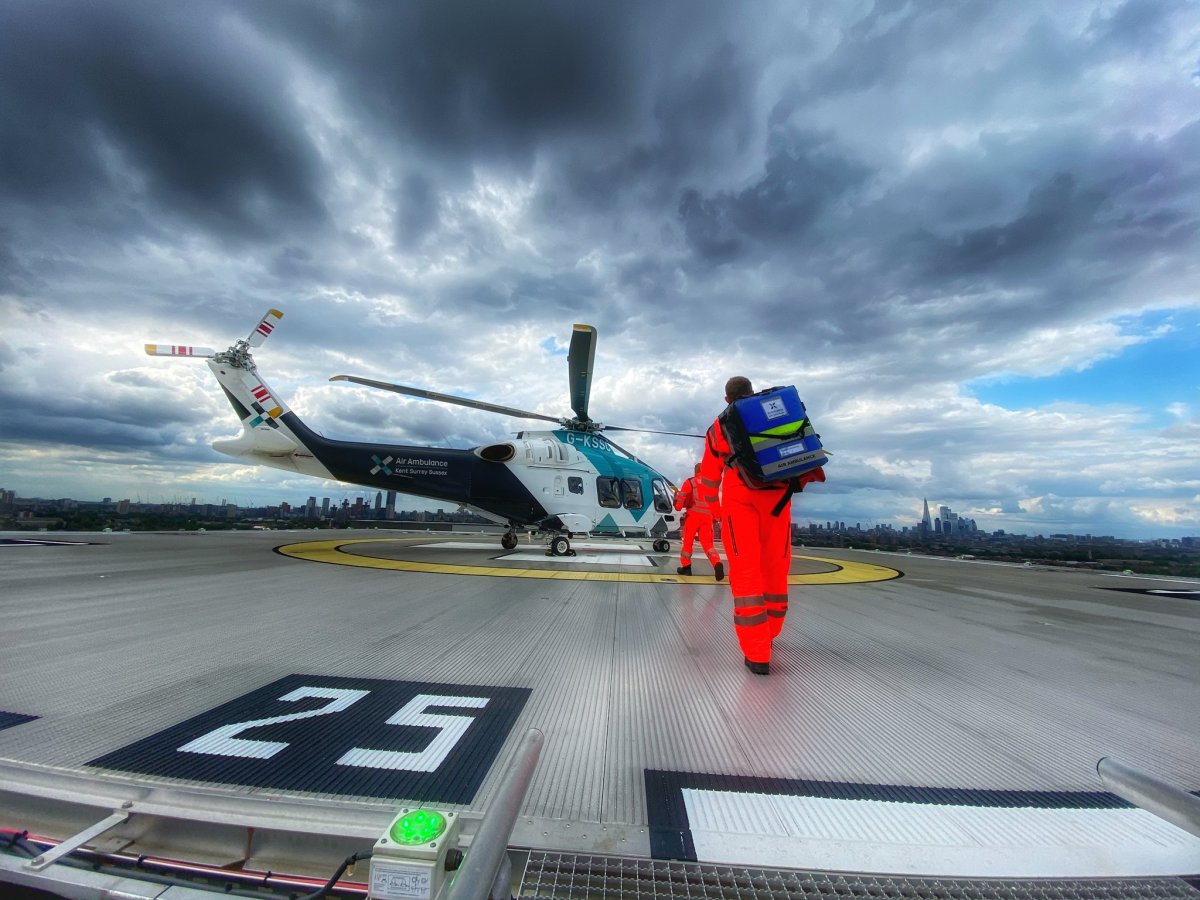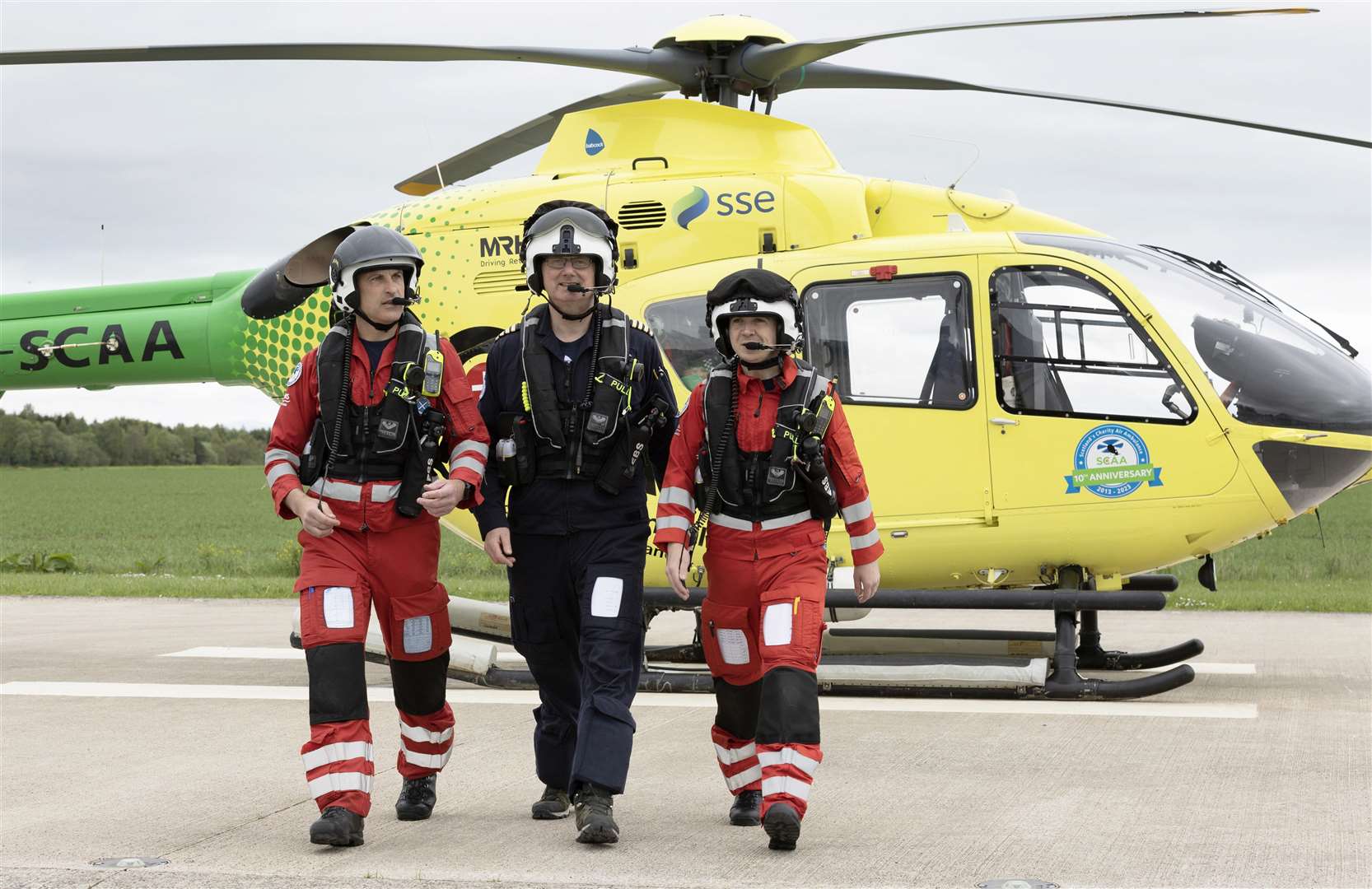Imagine being high up in the sky, racing against time to save lives. The stakes are high and every second counts. In such critical situations, effective communication is not just important, it’s essential. That’s why air ambulance teams have developed sophisticated systems to ensure seamless and reliable communication while in flight. From state-of-the-art radios to satellite-based technology, these teams have mastered the art of staying connected when it matters the most. So, let’s take a closer look at how air ambulance teams keep the lines of communication open in the sky.
Communication in the Sky: How Air Ambulance Teams Stay Connected
Communication is a crucial aspect of air ambulance services, as it plays a vital role in ensuring efficient operations and the safety of both the crew and patients. In the fast-paced and high-stress environment of air ambulance missions, effective communication becomes even more critical. Let’s explore the different tools and techniques used by air ambulance teams to stay connected and address the challenges they face in maintaining clear communication.

1. Importance of Communication in Air Ambulance Services
1.1 Ensuring Efficient Communication
In the context of air ambulance services, efficient communication is essential for seamless coordination among crew members, ground control, and medical facilities. It enables the exchange of critical information, such as patient condition updates, aircraft status, and navigation details. Smooth communication allows the crew to make informed decisions promptly and provide the best possible care to the patients.
1.2 Safety and Coordination
Maintaining clear and constant communication contributes to the overall safety of air ambulance missions. Crew members can relay important updates and instructions, ensuring everyone is aware of the evolving situation. This coordination helps prevent miscommunication and potential errors during critical moments of the mission.
2. Communication Tools Used in Air Ambulance Services
To facilitate effective communication, air ambulance teams utilize a variety of tools and technologies. Let’s explore some of the key communication tools commonly used in the industry.
2.1 Radios and Intercom Systems
Radios and intercom systems serve as the backbone of communication within an air ambulance. Crew members use handheld radios to transmit and receive messages between the aircraft, ground control, and other involved parties. Intercom systems allow clear and simultaneous communication between crew members within the aircraft, enhancing coordination and teamwork.
2.2 Satellite Communication Devices
Air ambulances often operate in remote areas or during emergency situations where traditional forms of communication may be limited. Satellite communication devices provide a reliable means of staying connected in such scenarios. These devices utilize satellites to establish communication links, ensuring constant connectivity even in areas with limited or no cellular coverage.
2.3 Cell Phones and Mobile Communication
Cell phones are widely used by air ambulance teams as a secondary communication tool. While primarily relying on dedicated communication systems, cell phones serve as a backup means of communication if other systems fail or during non-critical operations. Mobile communication also allows the crew to stay connected with their base and access real-time information when needed.
2.4 Data-Sharing Platforms
Air ambulance services heavily rely on data sharing to ensure effective communication and seamless patient care. Data-sharing platforms enable medical teams to exchange patient information, medical records, and other critical data securely and efficiently. These platforms ensure that all relevant parties have access to the necessary information, improving decision-making processes and overall patient outcomes.

3. Challenges in Communication during Air Ambulance Missions
Air ambulance missions come with several unique challenges that can hinder effective communication. It is crucial for air ambulance teams to be aware of these challenges and implement strategies to overcome them.
3.1 Limited Bandwidth and Signal Coverage
Operating in remote or disaster-stricken areas often brings challenges of limited bandwidth and signal coverage. Maintaining consistent communication becomes difficult in such scenarios, requiring air ambulance teams to rely on alternative communication methods or utilize satellite-based systems.
3.2 Noise and Distractions in the Aircraft
The noisy environment inside an aircraft can impede clear communication, particularly during critical situations. Pilots, medical personnel, and other crew members must employ effective techniques, such as using hand signals or clear and concise verbal commands, to overcome the noise and maintain effective communication.
3.3 Communication with Ground Control and Medical Facilities
Communicating with ground control and medical facilities involves various challenges, including coordinating landing procedures, sharing vital patient information, and receiving updates on the availability of medical resources. Establishing clear communication channels and protocols with these entities is crucial for a successful air ambulance mission.
4. Training and Protocols for Effective Communication
With the importance of communication in air ambulance services, it is essential for air ambulance teams to undergo rigorous training and adhere to standardized protocols.
4.1 Communication Training for Air Ambulance Teams
Air ambulance crew members receive extensive training in effective communication techniques specific to their roles and responsibilities. This training focuses on clear and concise communication, active listening, and the use of standardized phrases and codes to ensure efficient and accurate transmission of information.
4.2 Standardized Communication Protocols
Standardized communication protocols are essential for maintaining consistency and clarity during air ambulance missions. These protocols establish a common language and structure for crew members, allowing them to convey critical information efficiently and systematically. Standardized protocols also enhance the coordination among different teams involved in the mission.
4.3 Clear and Concise Communication
During high-stress situations, it is important for air ambulance teams to communicate clearly and concisely to avoid misunderstandings or errors. In these situations, brevity and simplicity are key, ensuring that the message is accurately understood and can be acted upon immediately.

5. Communication Enhancements and Innovations in Air Ambulance Services
Advancements in technology continue to drive improvements in air ambulance communication. Let’s explore some of the communication enhancements and innovations that have been implemented to further enhance the effectiveness of air ambulance services.
5.1 Integrated Communication Systems
Integrated communication systems consolidate various communication tools into a single platform, streamlining the flow of information and enabling seamless communication between crew members, ground control, and medical facilities. These systems provide a centralized hub for communication, reducing the need for multiple devices and simplifying the coordination process.
5.2 Real-time Data Transmission
Real-time data transmission enables air ambulance teams to transmit patient data, including vital signs and medical records, in real-time to medical facilities. This allows medical professionals on the ground to prepare and allocate appropriate resources before the air ambulance arrives, saving valuable time and improving patient outcomes.
5.3 Telemedicine and Video Conferencing
Telemedicine and video conferencing technology have revolutionized air ambulance communication by enabling remote medical consultations between onboard medical personnel and specialists on the ground. This technology allows for real-time collaboration, enhancing the delivery of specialized care during air ambulance missions.
6. Considerations for Maintaining Communication during Air Ambulance Missions
To ensure uninterrupted communication during air ambulance missions, certain considerations must be taken into account.
6.1 Backup Communication Systems
Having backup communication systems in place is crucial to mitigate the risk of communication failure during critical missions. Redundant devices, such as additional radios, spare batteries, or alternative satellite devices, should be readily available to ensure continuous connectivity.
6.2 Regular Maintenance and Checks
Proactive maintenance and regular checks of communication equipment are essential to identify and address any potential issues before they disrupt communication during air ambulance missions. Equipment checks should be a routine part of pre-flight procedures to ensure all communication systems are functioning optimally.

7. Collaborative Communication with Patients and Their Families
Effective communication with patients and their families is vital during air ambulance missions to ensure their understanding of the situation and provide reassurance.
7.1 Ensuring Patient and Family Understanding
Air ambulance crews employ clear and empathetic communication techniques when interacting with patients and their families. They explain the procedures, offer reassurance, and answer any questions or concerns, ensuring that the patients and their families are informed and involved in the decision-making process.
7.2 Language Barriers and Translation Services
When dealing with diverse populations or international missions, language barriers can hinder effective communication. Air ambulance companies often utilize translation services to overcome this challenge. These services provide immediate translation support to ensure accurate and timely communication with patients and their families.
8. Regulatory Standards for Air Ambulance Communication
Regulatory bodies establish industry regulations and guidelines to ensure proper communication practices are followed by air ambulance services.
8.1 Industry Regulations and Guidelines
Different countries have specific regulations and guidelines for air ambulance communication. These may include frequency allocation, distress call procedures, and encryption standards. Air ambulance services are required to adhere to these regulatory standards to ensure safety and consistency in communication practices.
8.2 Compliance and Auditing
Compliance with regulatory standards is crucial for air ambulance services. Regular audits and assessments are conducted to ensure that communication systems, protocols, and training meet the required standards. These audits help identify areas for improvement and ensure that communication practices are up to date with evolving industry requirements.
10. Future Trends in Air Ambulance Communication
The future of air ambulance communication is filled with exciting advancements that aim to further enhance efficiency, connectivity, and patient care.
10.1 Artificial Intelligence and Automation
Artificial intelligence (AI) and automation have the potential to greatly enhance air ambulance communication. AI systems can analyze vast amounts of data in real-time, providing valuable insights and alerts to the crew. Automation can streamline routine communication tasks, allowing the crew to focus more on critical decision-making and providing direct patient care.
10.2 Enhanced Encryption and Cybersecurity
As communication technology advances, ensuring the security and integrity of transmitted data becomes increasingly important. Enhanced encryption and cybersecurity measures are being developed to protect sensitive patient information and prevent unauthorized access. These advancements will further strengthen the confidentiality and privacy of communication in air ambulance services.
In conclusion, effective communication is paramount in air ambulance services to ensure seamless operations, patient safety, and optimal patient care. By utilizing a combination of dedicated communication tools, standardized protocols, and ongoing training, air ambulance teams can overcome challenges and stay connected in the sky. As technology continues to evolve, communication enhancements and innovations promise to revolutionize air ambulance services, promising a future of improved connectivity, efficiency, and patient outcomes.



